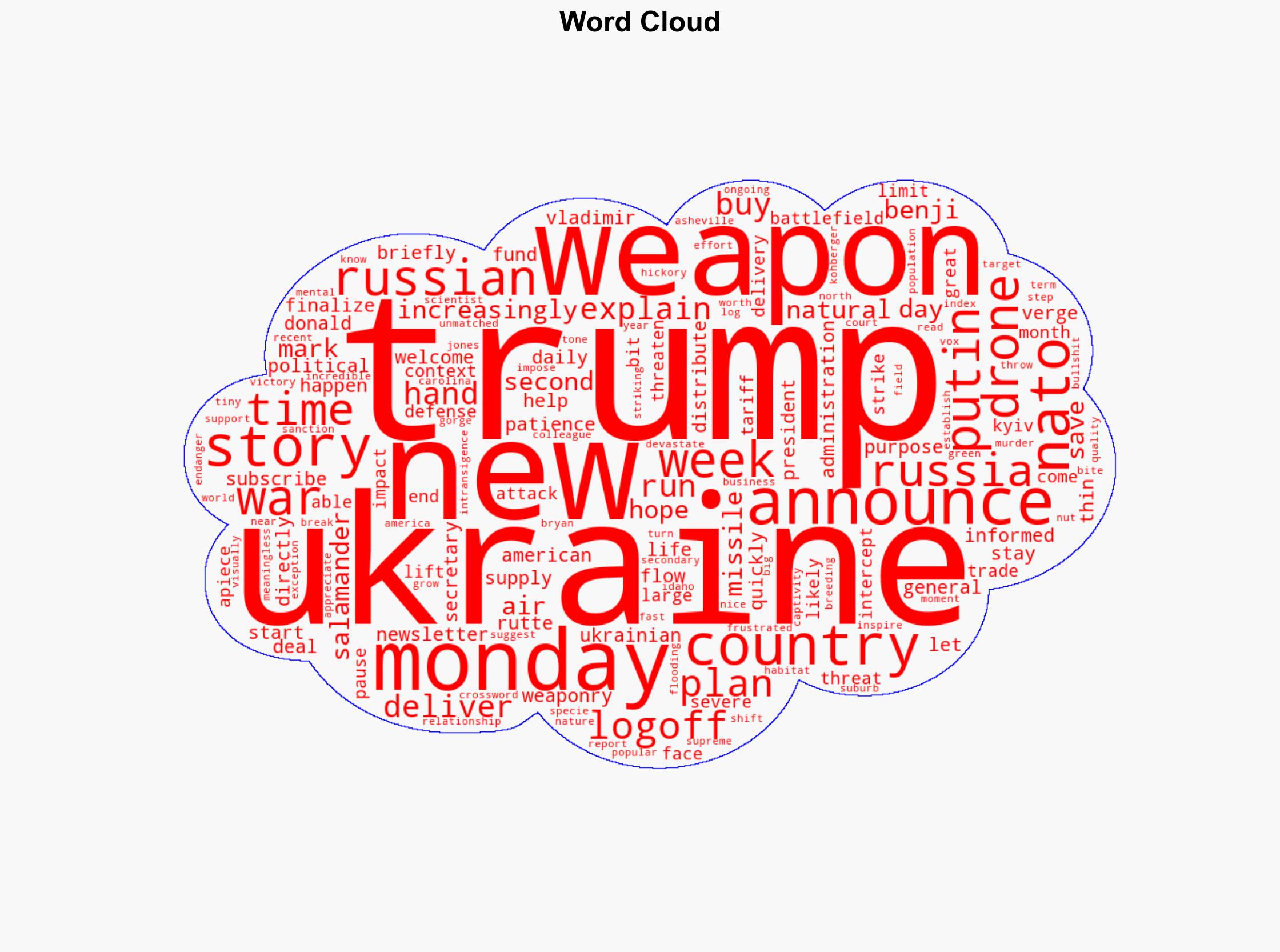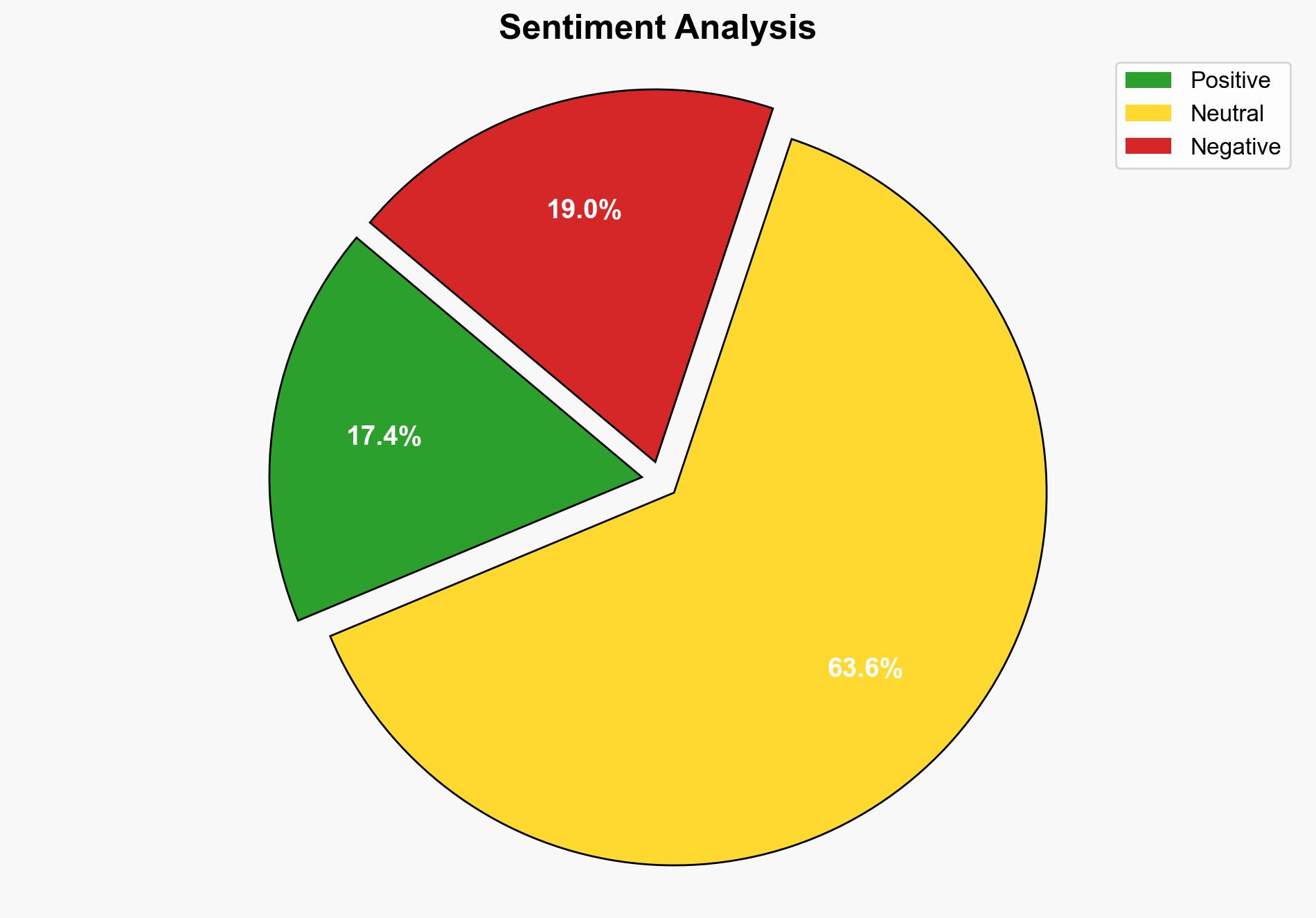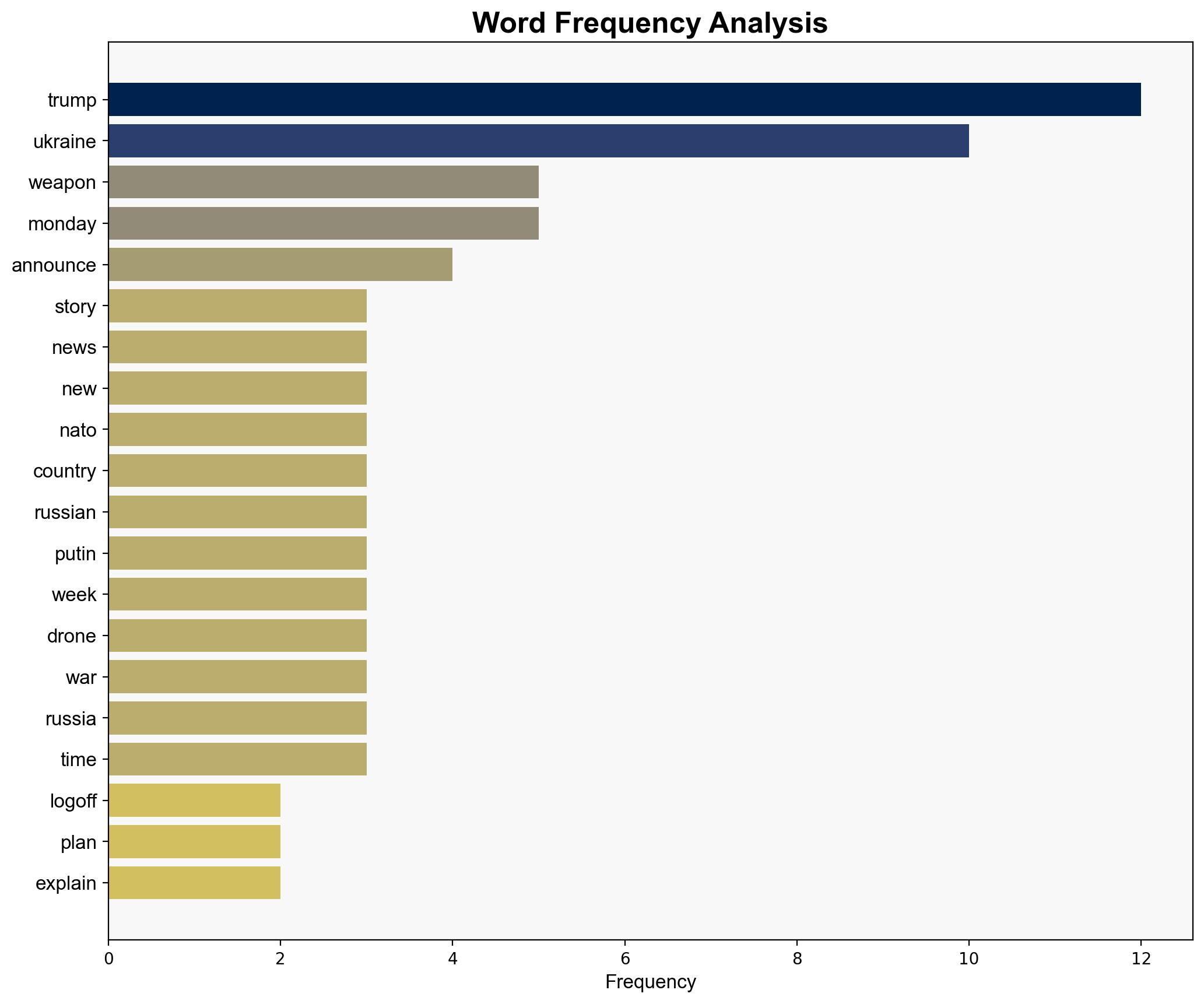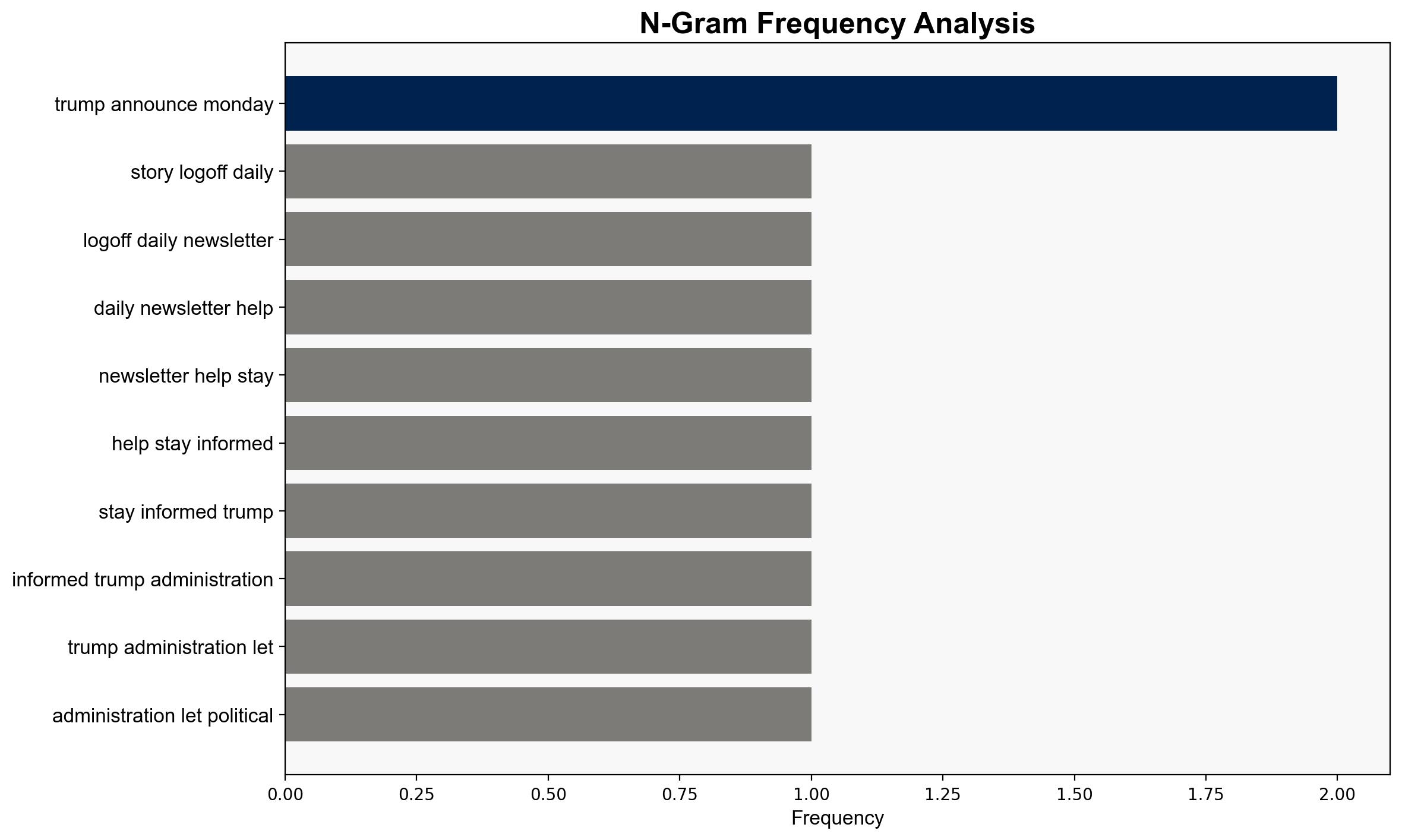Trumps new Ukraine plan briefly explained – Vox
Published on: 2025-07-14
Intelligence Report: Trumps new Ukraine plan briefly explained – Vox
1. BLUF (Bottom Line Up Front)
The recent announcement by Donald Trump regarding a new plan for Ukraine involves NATO countries purchasing and delivering American weapons to Ukraine. This initiative aims to bolster Ukraine’s defense capabilities against increasing threats from Russia, particularly in the face of drone and missile attacks. The plan also includes lifting a pause on air defense missile deliveries to Ukraine. Additionally, Trump has threatened severe tariffs and secondary sanctions on Russia if the conflict persists. This shift in strategy suggests an increased frustration with Russia’s ongoing aggression.
2. Detailed Analysis
The following structured analytic techniques have been applied to ensure methodological consistency:
Causal Layered Analysis (CLA)
At the surface level, the plan represents a direct response to Ukraine’s immediate military needs. Systemically, it reflects a strategic alignment with NATO to counter Russian aggression. The worldview underpinning this move is a commitment to uphold international norms and deter expansionist policies. The myth driving this narrative is the enduring struggle for sovereignty and territorial integrity.
Cross-Impact Simulation
The delivery of weapons to Ukraine is likely to escalate tensions with Russia, potentially prompting retaliatory measures. Neighboring states may experience increased security concerns, leading to a regional arms buildup. Economic dependencies on Russian energy could complicate responses from European countries.
Scenario Generation
In a best-case scenario, increased military support leads to a de-escalation of hostilities and a negotiated settlement. In a worst-case scenario, the conflict intensifies, drawing in additional actors and destabilizing the region. The most likely scenario involves a protracted conflict with intermittent escalations.
3. Implications and Strategic Risks
The plan introduces several strategic risks, including potential cyber retaliations by Russia targeting critical infrastructure. Economically, secondary sanctions could disrupt global markets and affect energy supplies. Militarily, the increased flow of weapons may lead to an arms race in Eastern Europe, heightening regional instability.
4. Recommendations and Outlook
- Enhance cybersecurity measures to protect against potential retaliatory attacks from Russia.
- Engage in diplomatic efforts to mitigate regional tensions and promote dialogue between conflicting parties.
- Monitor economic indicators to anticipate and manage the impact of sanctions on global markets.
- Scenario-based projections suggest preparing for a prolonged conflict with periodic escalations as the most likely outcome.
5. Key Individuals and Entities
Donald Trump, Vladimir Putin, Mark Rutte
6. Thematic Tags
national security threats, military strategy, regional stability, economic sanctions





